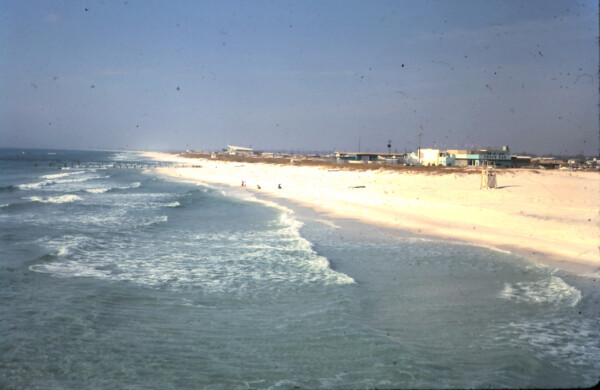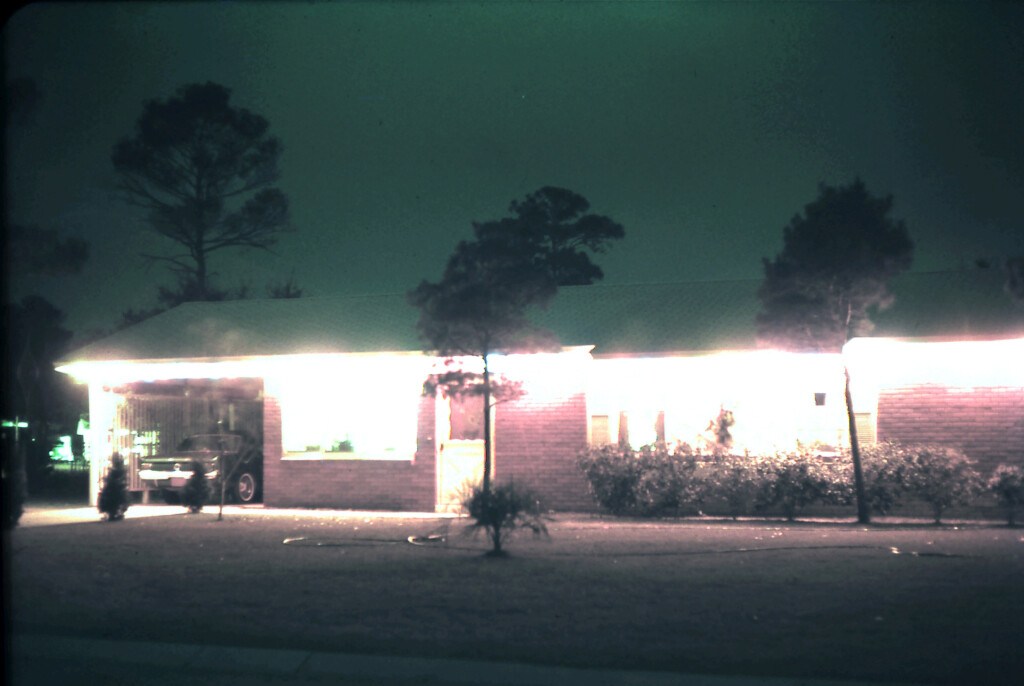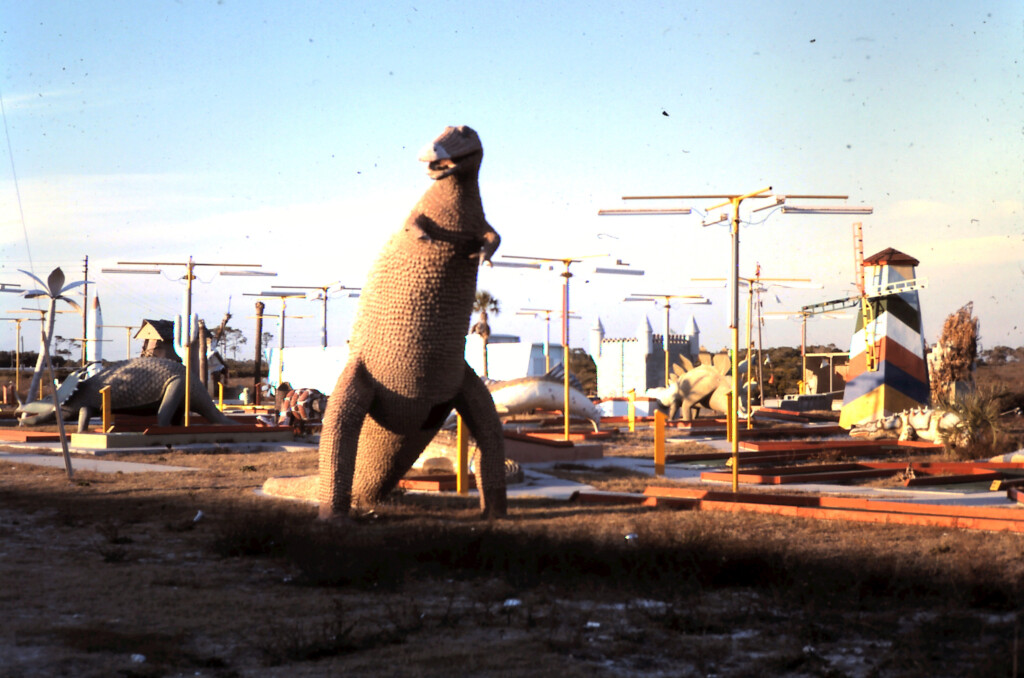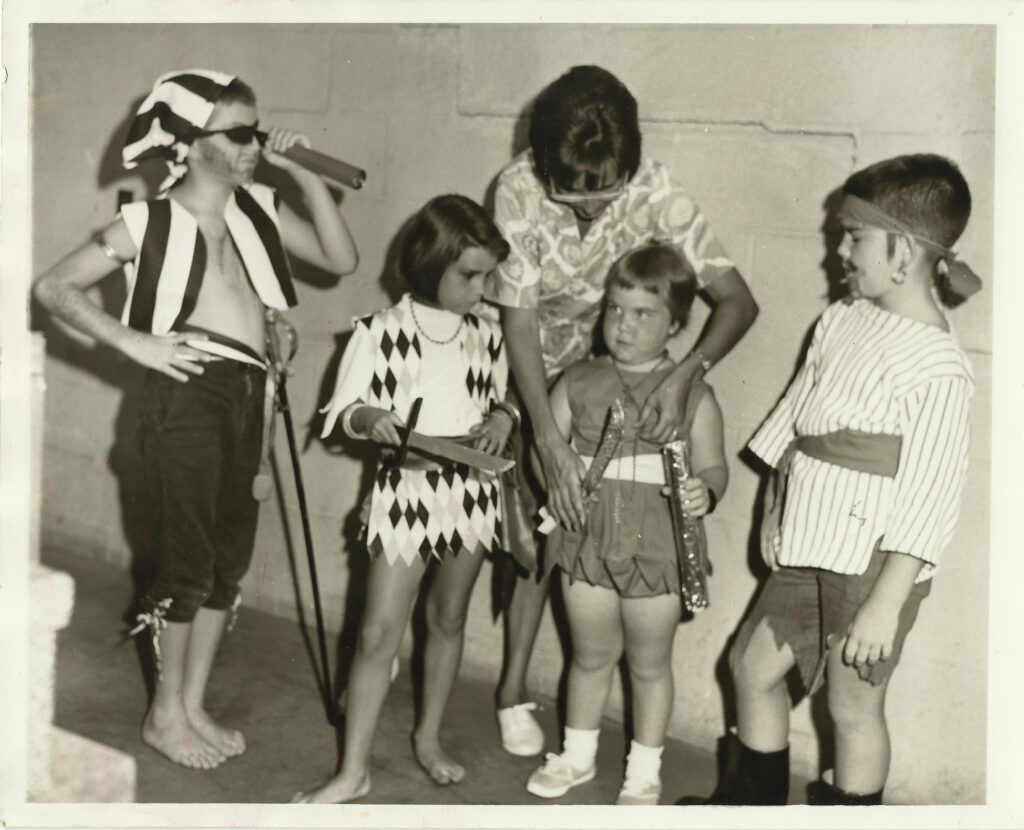I prefer change that benefits us all

In 1964 the beach along Okaloosa Island was mostly free of condos and other buildings. This photo was taken from the Okaloosa Island fishing pier. Image courtesy of Del Stone Sr.
When it comes to the history of Fort Walton Beach, I have an unfair advantage.
Not only have I lived here a long time, but my mother’s family, the Readys, moved to the area in the 1930s. On lazy Sunday afternoons, after I’ve finished killing whatever plant it is I’m trying to grow in Mom’s yard, I sit on her front porch and listen to stories about the area’s early days.
Needless to say, life was dramatically different back then.
Mom’s family lived in a house that had electricity and a wood-burning stove but little else. The kitchen was a separate structure and water came from a well.
On laundry day, the kids would build a fire in the yard and boil their clothes in a large kettle, rinsing them three times in separate kettles. The water in that last kettle had to be free of soapy residue before the clothes could be hung up to dry.



To make money, Mom and her sister, my Aunt Wendy, delivered the Pensacola newspaper on foot. They also crabbed along the shores of Choctawhatchee Bay and Santa Rosa Sound, then cleaned the crabs and sold them to the Gulfview Hotel. Grandmom made pies and cakes and sold them to the Gulfview.
Eglin Parkway was a dirt road. Deer and livestock wandered the streets of Fort Walton Beach. A cypress forest stretched from the Ferry Park area south to U.S. Highway 98 in the vicinity of Perry Avenue. It was a popular hangout for rattlesnakes.
Meanwhile, up near Cinco Bayou, alligators basked along the shoreline. Grandmom admonished the kids not to go down there where those alligators were hanging around. But it was OK to go under the house to fetch eggs from the chickens that built nests there. Sometimes a rattlesnake helped itself to those eggs, too.
The Cinco Bayou bridge was made of wood planks. Mom said that when relatives from Alabama visited, you could hear their cars crossing the bridge because the tires made a racket. The kids would then stand by the road, waiting for the relatives to pass by.
The bridge to the island was what they called a “swing bridge.” When a tall boat sailed down Santa Rosa Sound, a bridge tender would lower traffic barriers, then swing the bridge 90 degrees so the boat could pass through. Imagine how that would affect traffic today!
Bad weather tended to catch them by surprise. Mom remembers walking dirt roads and seeing fish fall from the sky. The fish were still alive. Today we know the fish were sucked up by a waterspout, but back then there was no explanation for such an event. In 1936 a hurricane struck the area. They had no warning and knew it was a hurricane only when it continuously grew worse. My Uncle Jimmy spent the storm in a cottage on Okaloosa Island. Mom, Aunt Wendy and Grandmom stayed at their house in Cinco Bayou. They even brought the cow inside to ride out the storm.
Mom was a waitress at the bus station before going to work at the Tringas Theater. During World War II, she said, they passed around a collection jar among the audience members to raise money for armaments.
She met my dad when he was stationed at Eglin. Dad was a pilot, and Mom said he would buzz their house, causing Granddad to stomp outside and shake his fist at the sky. Dad once took Mom on a joyride and performed acrobatics; Mom was not amused.
Eventually growth would come to the area, with improved roads and bridges. More people moved to Fort Walton and Mom moved away, following Dad and his career in the Army Air Corps, then the U.S. Air Force. When it came time for Dad to retire, the family moved back to Fort Walton, and here we’ve been ever since.
As a longtime resident, I am not in favor of dirt roads and alligators sharing my swimming area. But at the same time, I’m not in favor of traffic jams and blocked beaches. I realize change is inevitable, but I wish it could be change we’ll all benefit from.

About the author:
Del Stone Jr. is a professional fiction writer. He is known primarily for his work in the contemporary dark fiction field, but has also published science fiction and contemporary fantasy. Stone’s stories, poetry and scripts have appeared in publications such as Amazing Stories, Eldritch Tales, and Bantam-Spectra’s Full Spectrum. His short fiction has been published in The Year’s Best Horror Stories XXII; Alfred Hitchcock’s Mystery Magazine; the Pocket Books anthology More Phobias; the Barnes & Noble anthologies 100 Wicked Little Witch Stories, Horrors! 365 Scary Stories, and 100 Astounding Little Alien Stories; the HWA anthology Psychos; and other short fiction venues, like Blood Muse, Live Without a Net, Zombiesque and Sex Macabre. Stone’s comic book debut was in the Clive Barker series of books, Hellraiser, published by Marvel/Epic and reprinted in The Best of Hellraiser anthology. He has also published stories in Penthouse Comix, and worked with artist Dave Dorman on many projects, including the illustrated novella “Roadkill,” a short story for the Andrew Vachss anthology Underground from Dark Horse, an ashcan titled “December” for Hero Illustrated, and several of Dorman’s Wasted Lands novellas and comics, such as Rail from Image and “The Uninvited.” Stone’s novel, Dead Heat, won the 1996 International Horror Guild’s award for best first novel and was a runner-up for the Bram Stoker Award. Stone has also been a finalist for the IHG award for short fiction, the British Fantasy Award for best novella, and a semifinalist for the Nebula and Writers of the Future awards. His stories have appeared in anthologies that have won the Bram Stoker Award and the World Fantasy Award. Two of his works were optioned for film, the novella “Black Tide” and short story “Crisis Line.”
Stone recently retired after a 41-year career in journalism. He won numerous awards for his work, and in 1986 was named Florida’s best columnist in his circulation division by the Florida Society of Newspaper Editors. In 2001 he received an honorable mention from the National Lesbian and Gay Journalists Association for his essay “When Freedom of Speech Ends” and in 2003 he was voted Best of the Best in the category of columnists by Emerald Coast Magazine. He participated in book signings and awareness campaigns, and was a guest on local television and radio programs.
As an addendum, Stone is single, kills tomatoes and morning glories with ruthless efficiency, once tied the stem of a cocktail cherry in a knot with his tongue, and carries a permanent scar on his chest after having been shot with a paintball gun. He’s in his 60s as of this writing but doesn’t look a day over 94.
Contact Del at [email protected]. He is also on Facebook, twitter, Pinterest, tumblr, TikTok, and Instagram. Visit his website at delstonejr.com .
![]()
Ah, sweet memories of youth.